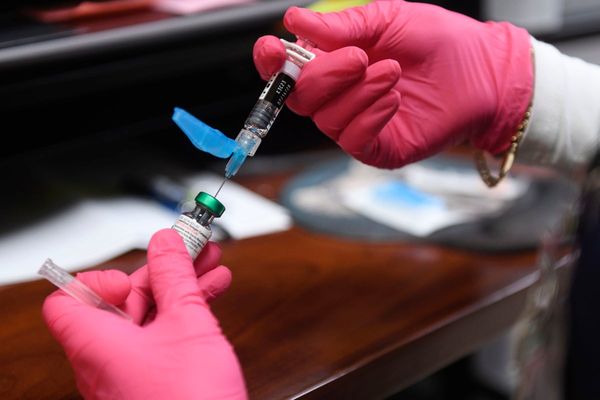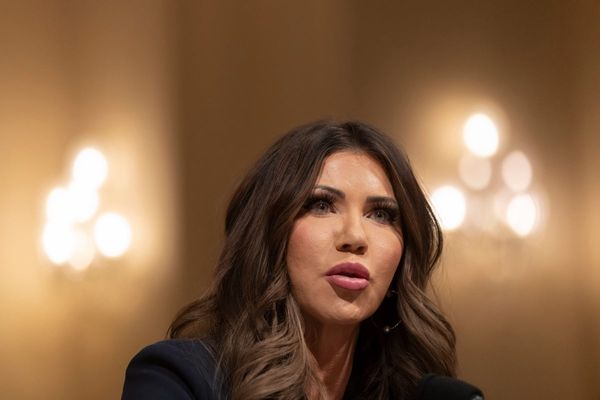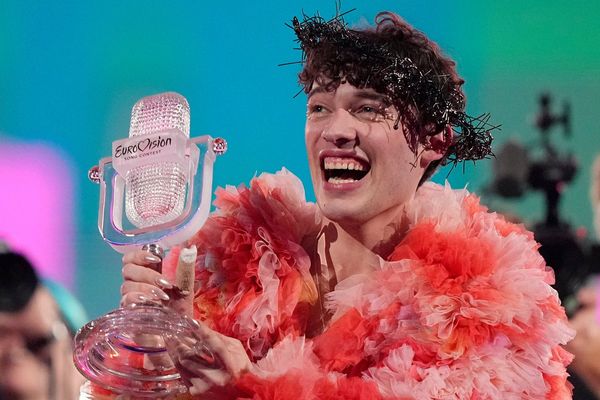
Sheila Hicks – American-born textile artist, Parisian since 1964 and, at 87, en pleine forme – has a plan for my visit, but it’s not entirely clear to me what it is. She greets me outside her studio – the platonic ideal of a cobbled courtyard in the Latin Quarter, with creeper-draped buildings of startling beauty, an ancient well, even an elderly gent processing elegantly out the gates on a bicycle. Speaking in the soft but decisive tones of a lady of great age who knows precisely what she’s about, she points to various windows – here Hockney had a studio, here Tony Richardson, you know? He was married to Vanessa Redgrave. Here Robert Carsen, the opera director. Balthus had his studio up here. She proceeds at a stately pace towards the courtyard’s back entrance. Here Dr Guillotin experimented. He placed his equipment here you see and the blood ran downhill, here. He tried it out on sheep.

We pass into the street. It eventually transpires, via more points of interest (here, a revolutionary newspaper was produced), that we are going for lunch at the platonic ideal of a Parisian bistro; I half expect us to wander off to Les Deux Magots for coffee with Gertrude Stein. We are also, at last, going to talk about her work as an artist – if that one word does not seem too flimsy when one considers an oeuvre that has encompassed design and magazine editing and tapestry and sculpture and weaving and painting and collaboration with architects. She is about to open an exhibition of her work at the Hepworth Wakefield, just the latest chapter in a long life that began in Nebraska in 1934. Her artistic lineage is mighty: it stretches back to the Bauhaus, since it was the great German painter Josef Albers who trained her at Yale – Josef being the husband of the also great German weaver Anni Albers, both of whom had been stalwarts of the school during the Weimar republic before fleeing to the US.
But first, it is I, seemingly, who must answer a question. “What colour do you think of when you think of Anni Albers?” Hicks asks, her mischievous gaze penetrating. Sensing that there may be a right and a wrong answer, I desperately rake back through my memories of the Tate Modern exhibition in 2019 and eventually mumble something about no particular colour, in fact, coming to mind. “Exactly!” she says. “The colour seems completely arbitrary.” She tells me that Albers’ textiles were all about structure. She, Hicks, on the other hand, is all about colour. “Colour is in my blood! A chacun son domaine!”
It is colour she wants to talk about today. We discuss the sunflower gold of my blouse; her shirt, blue as the Paris sky on the first spring day of the year; the buttery yellow of the jacket she wore that past Monday to the Stella McCartney show. Later, back at the studio – an enticing cave whose shelves glimmer with reels of jewel-coloured thread – our conversation is punctuated by murmured instructions to her assistants. They, four of them, are sitting around a long table, working great lengths of yarn in flame and scarlet and green and blue into voluptuous ropes, an eventual sculpture. She works, she says, “like a painter. A little bit more here, a little more here, paint over that, pull that out. It’s not like working on a loom where you set up a programme. It’s intuitive: stroke by stroke. I can change it at any moment.” She murmurs, “A droite … Un peu moins … pour calmer un peu l’orange …”

What she does not, for instance, want to discuss is the fundamental and ancient role of weaving in human society, its function as a metaphor, its place in myth. She thought about all that many years ago when she was travelling round Latin America on a Fulbright scholarship in the late 1950s, studying pre-Columbian textiles. She had been inspired in that line of study by her Yale art history professor, the hugely influential George Kubler, author of The Shape of Time, who not only showed his students a lot of slides of Andean mummy bundles but “looked like a walking mummy bundle … a fascinating man, he presided over his classes in such a powerful way”.
As a result of those classes she’d experimented with reconstructing ancient weaving techniques on a simple loom, which started her off on textiles, at the same time as she was studying painting under Albers. Even now she makes small weavings on a simple frame as a kind of diary. Later, she shows me some of these woven “notebooks” into which she has incorporated feathers, or corn husks, or scallop shells like the ones left over from our bistro lunch, or twigs collected with her granddaughter from the Jardin du Luxembourg. But today, she waves aside all that ethnographic stuff that she used to be interested in. “I’ve moved on. I’ve been around the block 10 times already! I’ve set myself the task of working, making, thinking and doing art that deserves to be noticed strictly because it’s art.”
She makes, it seems, no hierarchical distinction between things that are made to fit a slot in a building, things that are made to answer a commission, and things that are destined for a gallery. “I sense you don’t much like to be pinned down,” I moot. “That’s certainly what my husband would say,” she replies, quick as Katharine Hepburn. “Everything I do is only intended for one person,” she says. Herself, of course. “I like it, and I like doing it.” The rest – conversations with curators, or publishers, or architects – that’s a second-order matter. In the 1970s, she even made embroidered panels for the interiors of Air France’s first fleet of Boeing 747s. Her assistants on that occasion were nuns from a silent Carmelite convent. They needed the work. The bottom was falling out of the communion-wafer market.
There are other stories to be told, too: the time she pissed off all the Armenian carpet dealers in Paris when she bought up tons of rugs from the auction house Drouot, to be used in Stanley Kubrick’s The Shining (though they never were). And the time, when she was editing the magazine American Fabrics and Fashions, when she got Madame Grès a fancy Dutch art fellowship because the fashion designer, she argued, “was really a sculptor”. Tiny, ancient Mme Grès “in her turban and Jaguar drove to the Hague and got the award and got into her car and drove straight back” – skipping her own party. And afterwards, the great couturier made Hicks a black-and-red dress (which Hicks may or not wear to her opening in Wakefield), the grande dame sitting on the floor with pins in her mouth while Hicks said to her, “I’m so embarrassed,” and Grès responded, sternly, “Madame, you too are a woman who knows what it is to do your métier.”

Colour, though: Josef Albers was the great colour theorist, his classes on the subject famous – and Hicks taught his class herself, afterwards, in Chile, on her Fulbright. But she tells me that the earliest work in the Wakefield exhibition predates her classes with him: it’s a painting from a summer she spent in Taxco, Mexico, in 1954. She’d already done two years at Syracuse University, until – and this story is delivered with a certain sangfroid, its tragedy perhaps blunted for Hicks by time and retelling – a friend of hers from the course suggested they try to transfer to Yale. The Ivy League institution, at the time, aside from a handful of girls at the art school, “took only boys. Which we thought would be fun. Not much competition, right?” So her friend took their portfolios over in the Easter vacation, “and it was Albers who looked at them. He liked her work. He liked my work. He said ‘Yeah, put these girls in’. And then that summer, my friend stuck her head in the oven and gassed herself.”
“What do I do now? I didn’t want to go back to school, because everyone was going to ask what happened.” She took that summer in Taxco to think about it, then decided: “I’ll go to Yale because I don’t know anybody. I don’t have to answer to anybody. What happens happens. Of course, I knew about colour before I got to Yale because that’s what Albers saw in me.” She describes how he would set weekly exercises for his colour class, then he’d gather in the work from the students anonymously and pick out pieces to talk about in the class. “And most of the time he was using my work – anonymously pulling it up and using it as examples. So there was a kind of mutual appreciation – but anonymously. You were sticking to the subject. It was not a gender subject. It was not a race subject. It was none of that. It was colour.”

And then there was Anni Albers. Hicks laughs when she tells me how she gets defined as Anni Albers’ pupil. Not a bit of it. When she started making those improvised looms for her art-history studies, though, Josef Albers introduced the two of them. Anni didn’t teach at Yale – there was no weaving department and there were certainly no female professors. Josef “wasn’t even very polite. He said, ‘Come with me, girl, be in my office at four, we’re going to meet my wife.’” Hicks, “like a dumb student”, had no idea who his wife was. The guy painting next to her hissed, “You don’t go home with your teachers!” And Hicks hissed back, “I don’t think I have a choice.” And what about Anni Albers? “Oh, she wasn’t in the least bit impressed with my stuff.” You sense Hicks doesn’t really care too much for the association, thought it can be useful, and she is nothing if not a pragmatist, picking up opportunities along the way and working to no one’s agenda but her own. And so I leave her, and she turns back, perhaps in relief, to the demands of the flame and the scarlet and the blue and the green.
Sheila Hicks: Off Grid is at the Hepworth Wakefield, from 7 April to 25 September.







